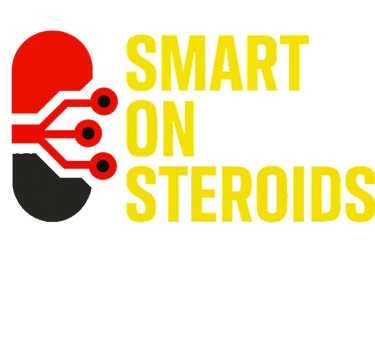Discover & Design : AI AUTOMATION SYSTEM PROCESSING
Process mining, KPI baselines, tooling benchmark, ROI model and a 90‑day plan
8/20/20253 min read


Executive summary
Discover & Design is the first, high‑leverage phase of any Automation program. We turn scattered knowledge into a measurable, production‑ready plan: current‑state maps, KPI baselines, a tooling benchmark aligned to your stack and constraints, a defensible ROI model, and a 90‑day execution plan with clear exit criteria.
1) Objectives & scope
• Establish factual baselines for time, cost, quality and risk.
• Identify and prioritise automation candidates with business owners.
• Select tools (build/buy) with security, data and ops stakeholders.
• Produce an ROI model and a 90‑day plan with week‑by‑week deliverables.
2) Inputs required (week 0)
• Access: sample datasets, test accounts, logs/exports, API keys (sandbox).
• Stakeholders: process owners, operators, security/legal, data engineering.
• Systems: CRM/ERP/ITSM, content stores, data warehouse, identity & permissions.
• Policies: data retention, privacy, PII handling, procurement guardrails.
3) Method overview
Step A — Process mining & interviews → current‑state map, bottlenecks, exception paths.
Step B — KPI baselines → time, error, cost, throughput, exception %, satisfaction.
Step C — Tooling benchmark → shortlist, evaluation, security & cost posture.
Step D — ROI model → drivers, scenarios, payback and sensitivity analysis.
Step E — 90‑day plan → weekly activities, deliverables, owners and exit criteria.
4) Process mining — how we map reality
• Data sources: event logs, tickets, emails, CRM states, doc metadata, manual time studies.
• Artefacts: current‑state swimlanes, exception tree, handoff matrix, pain score heatmap.
• Prioritisation: impact × feasibility × risk; top 3–5 candidate workflows.
5) KPI baselines — measurement that survives production
We define metrics that can be measured in the pilot and at scale (same definition).
KPI
Definition
Unit
Baseline method
Target (120 days)
Cycle time
Start → finish per item
minutes
Logs/time study
−30–50%
AHT
Average handling time (human touch)
minutes
Sampled sessions
−25–45%
Error rate
Defects per 100 items
%
QA sampling
−40–70%
Exceptions
Items needing human review
%
Ticket tags
−20–40%
Unit cost
All‑in cost per item
$/item
Finance model
−15–35%
6) Tooling benchmark — pick the right stack
We compare candidates against your requirements (quality, cost, privacy, operations).
Category
Candidates
Evaluation criteria
Notes
Models & inference
Open‑source LLMs; vendor APIs; domain‑specific models
Quality on tasks, latency, cost/1k tokens, privacy posture, on‑prem support
Fallback/routing options; red‑team results
Orchestration
Agent frameworks; workflow engines; function routers
Determinism, testability, retries, observability, CI/CD
Feature flags & rollbacks
Retrieval & data
Vector DB; warehouse; connectors
Freshness, security, scaling, TCO
PII handling; residency
Observability
Tracing & evaluation; cost telemetry
Coverage, ease of integration, SLOs
Dashboards & alerts
7) ROI model — drivers & scenarios
We build a simple, auditable model with baseline, conservative and aggressive scenarios.
Driver
Baseline value
Assumption / impact
Source
Volume
10,000 items / month
Stable ±10%
Logs / forecasts
Cycle time
12 min / item
−35% after 90 days
Time study
Error rate
6.5%
−50% with guardrails
QA sampling
Human time share
7 min / item
−40% HITL → co‑pilot
Observations
Unit cost
$1.10 / item
−25% by Q2
Finance
8) 90‑day plan — week‑by‑week
Week
Focus
Key activities
Deliverables
Exit criteria
0
Access & kick‑off
Accounts, data samples, security & privacy review
Access checklist; risk register
All accesses granted
1
Process mining
Interviews; log analysis; map exceptions & handoffs
Current‑state map; bottlenecks
Top candidates agreed
2
Design
Target state; test strategy; success criteria
Solution sketch; test plan
Design sign‑off
3–4
Baseline
Time studies; QA sampling; cost model
Baseline KPI sheet
Stakeholders agree numbers
5
Benchmark
Prototype critical paths; compare tools
Evaluation matrix; shortlist
Preferred stack approved
6
Plan
Roadmap; resource plan; risk mitigations
90‑day plan; RACI; SOW
Go for build sprint
9) Deliverables checklist
• Current‑state map (swimlanes) and exception tree.
• KPI baseline sheet (methods, samples, caveats).
• Tooling evaluation matrix + security notes.
• ROI model (xlsx) with scenarios & sensitivity.
• 90‑day plan with RACI, risks and exit criteria.
• Draft runbooks: setup, rollout, rollback.
• Compliance pack (DPA/PII handling/audit log schema).
10) RACI — who does what
Workstream
Sponsor
PM
Lead Eng
Data Eng
Security/Legal
Ops
Process mining
A
R
C
R
C
I
KPI baselines
R
C
R
I
I
Tooling benchmark
C
R
R
C
C
I
ROI model
C
R
C
C
I
I
90‑day plan
A
R
R
C
C
C
11) Risks & mitigations
Risk
Likelihood
Impact
Mitigation
Owner
Access delays
M
H
Escalation path; fallback datasets
PM
Data quality gaps
M
M
Profiling; sampling; cleanse plan
Data Eng
Vendor lock‑in
L
M
Open connectors; export paths
Lead Eng
Cost sprawl
M
M
Token budgets; caching; routing
Lead Eng
Change fatigue
M
H
Quick wins; weekly demos; comms
PM
12) Governance & cadence
• Weekly steering (30–45') with Sponsor, PM, Security and Ops.
• Demo at weeks 2, 4 and 6; decisions logged; risks reviewed.
• All artefacts versioned; metrics and costs visible in a shared dashboard.
13) Success criteria & sign‑off
• Baselines agreed; tooling stack approved; ROI model validated.
• 90‑day plan signed by stakeholders; risks and mitigations captured.
• Go decision for Build sprint with clear exit criteria.
14) FAQ
Q: How long does Discover & Design take?
A: Typically 4–6 weeks depending on access, with week‑0 prep for security and data.
Q: Can we include on‑prem constraints?
A: Yes. We benchmark on‑prem/open‑source options and model the TCO accordingly.
Q: Will you share templates?
A: Yes — KPI sheets, evaluation matrices, risk registers and runbooks ship with the engagement.
Book a 30’ ROI diagnosis
Email: contact@smartonsteroids.com — we’ll scope the Discover & Design phase, confirm inputs, and start week‑0 prep.
© 2025 Smart On Steroids — AI Automation Studio → Platform

